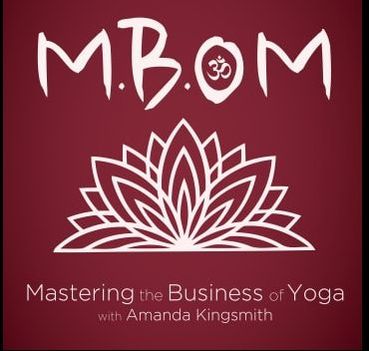 I had the absolute pleasure of talking about what it means to embody Yoga, Teach Kids and lead Successful Retreats with the amazing Amanda Kingsmith. Her podcast M.B.Om offers Yoga professionals a real look behind the scenes into the business aspect of the Yoga industry. Click here to listen to the interview
0 Comments
3/22/2018 0 Comments Join up the Dots w/ David Ralph
I had a wonderful time discussing Business, Niches, Following your passion, entrepreneurship and so much more with the fantastic David Ralph on the "Join up the Dots" Podcast. Take a listen below:
3/22/2018 0 Comments Laughter Yoga...is REAL!!by Awilda Rivera Originally published in Sept. 2016 In Aquarius Magazine for her long running column "Under The Bodhi Tree" under the heading 'Yoga and Change'
3/8/2018 0 Comments A Closer Look: Contentmentby Awilda RiveraOriginally published in Jun. 2016 In Aquarius Magazine for her long running column "Under The Bodhi Tree" For many Yoga consists of going to a studio to move mindfully, taking time to just be on the mat, in the moment without judgment. For some there is no interest in intellectualizing Yoga through study of its ancient philosophies or the methods at its core. Yet for others, there can be no mindful movement without also engaging in a dedicated study of ancient Yogic philosophies. You might wonder: Can the person who simply enjoys doing yoga asana have a complete yoga practice without studying its ancient philosophical roots?
The quick answer is: Yes! Yoga does not discriminate; it is for everyone. Each person comes to Yoga looking for something different, and ultimately finds what they need. There is no right or wrong way to approach it. The truth is that the person who comes to yoga to move mindfully & simply be is experientially learning Yogic philosophy. The root of the word Yoga is Yug, it means to yoke together as one. Yoga is about creating a complete unity of mind, body & spirit that organically produces contentment. In yoga philosophy there are ten (10) fundamental principles that help to inform one’s interactions both with the world[1] and with themselves[2]. Contentment is one of the principles that relates to how you interact with yourself.[3] Contentment is categorized by ones ability to be present in the moment without judgment of yourself or others, while detached from past or future outcomes. People find contentment through their yoga practice in many ways. Some people find contentment in just being on the mat doing yoga, others find contentment through the combination of movement and deeper study of Self through the lens of Yoga[4]. Ultimately regardless of the category you are in, both groups can produce individual who find contentment easier to attain off of the mat because of the contentment they have cultivated on the mat. When I first began practicing Yoga I was contented to simply be on my mat breathing, present in the moment. However, I was unable to hold onto that contentment once outside the studio. As soon as I got into the hallway or into my car all my responsibilities and cares would resurface, rushing to the forefront of my mind. I would allow myself to be overwhelmed with frustration, until I decided that if I allowed myself to be ok with being able to reach a state of clam during the class, then I could be content. After almost a year, I wanted to understand more of the why of Yoga so I decided to read BKS Iyengar’s “Tree of Yoga”. As I read, I started to feel more energetically connected to the physical movements and the moments of solace I was finding on the mat during class. As I read, the internal desire to take the contentment I found on the mat into the world began to grow. I realized I didn’t have to limit my contentment to confines of a studio or moment during class, I could be contentment whenever I wanted for whatever reason I wanted. I began to proactively apply the same ideas of balance, breath, and contentment to everyday situations that would have otherwise lead to anxiety or anger. Initially it was extremely challenging to breathe through a moment of anger, hold my perspective in a positive space and take action from a place of calm compassion. However, after a lot of practice it has become easier, while I am not perfect I am able to more easily identify: why I am, when I became, and how long I feel like remaining upset or anxious. Accidentally cultivating contentment through Yoga has only had a beneficial effect on my life. Becoming aware of cultivating contentment has resulted in the realization that contentment begins within me. Contentment directly relates to your perspective, it does not require that you be complacent or simply accept life passively but it demands an awareness of self and individual choice. Therefore, whether you study the philosophy or simply like to show up to move mindfully, as long as you are allowing yourself to be present in the moment without judgment of yourself or others, while detached from past or future outcomes, then you will experience a complete yoga practice. Not sure what the end goal of all this contentment is? Pantajali educates us that “[f]rom Contentment one gains Supreme Happiness.” [5] Not sure you believe him? Take a crack at it over the next month and see if your happiness quotient increases. [1] Yamas – Set of 5 priniciples that help to dictate how one should interact with the world [2] NiYama – set of 5 priniciples that help to dictate how one should treat themselves [3] Santosha in Sanskrit [4] Svadhaya – the yogic principle of Self Study encourages that one utilize yoga as an opportunity to dive deep within to learn more about yourself [5] Yoga Sutras of Pantajali: As interpreted by Makunda Stiles; Sutra II, 42; p. 27 2/22/2018 0 Comments Mindfulness 101by Awilda Rivera Originally published in Dec. 2017 In Aquarius Magazine for her long running column "Under The Bodhi Tree"
2/8/2018 0 Comments A Closer Look: Niyamasby Awilda RiveraOriginally published in 2016 In Aquarius Magazine for her long running column "Under The Bodhi Tree" under the heading 'Niyamas'
 You can't manifest something if you believe in nothing.... The two podcast I share below help you to better understand the relationship between Spirituality & Success. The first interview is with Victoria Lynn Weston of AYRIAL TALK TIME. We cover my personal Spirituality Story. Listen to me discuss what it was like to grow up in a household of Shaman, Healers and Psychics, AND how that shaped my business today. The Second Interview, with Alison Beierlein of LICENSE TO RECIEVE, we discuss Setting yourself up for Success by following your Intuition, the phases of Success & the behind the scenes of overnight success. Listen HERE. 12/20/2017 0 Comments Let's get down to Business...
There is so much to do when thinking about taking your professional career to the next level. At times the challenges can be numerous and it can feel like we are never going to accomplish our desired outcome.
HOWEVER - the truth is that every single Successful person you see has at one time been a beginner, taken on incredible odds, and faced self doubt. I had the pleasure of tackling this topics as a guest on a few podcasts over the last year. First up -- Check out my interview with Bryan Teare on his podcast - The Quarterlife Comeback. Listen to us discuss --- Becoming you own Boss, Using small tasks to accomplish big Goals, Healthy Boundaries & Avoidable Pitfalls:
NEXT UP....
When we face incredibly challenging obstacles - like in my case failing the Bar by a few points after working towards being a lawyer my entire life.... "HOW DO WE KEEP GOING & NEVER EVER GIVE UP???" Listen to Carol Graham & I discuss just that on her amazing podcast: NEVER EVER GIVE UP HOPE Podcast
Finally....
What are the Key Traits of Successful Entrepreneurs & Career Professionals? What are some things that set them apart from the rest? I had the pleasure of sitting down with Diana Gladney of the Passion 2 Business Podcast to answer those questions in detail. The two questions I get asked most often are (1) "How did you do make the change from law to Entrepreneurship?" and (2) "How does Investing in yourself help your business?" The Second interview tackles the age old questions: "Why should I invest in me?", "How will investing in my help me professionally? Personally?" CategoriesAll Infographic Personal Management Podcast Interviews Professional Development Success Coaching Time Ninja Series Under The Bodhi Tree Yoga 12/1/2017 0 Comments Hate it! Meditate on it....
by Awilda Rivera originally published February 2017 in Aquarius Magazine  Corporations are no longer satisfied with being the best in their industry, or the marketplace. The new end game is “Being the best place to work”. Making a place the “best” can include all manner of things from LinkedIn’s free gourmet cafeteria to Google’s internal coaching program. However, employers have started to realize that there is a correlation between their workforce’s level of happiness and the success of their company. Mindfulness practices have emerged as one of the focal points of a new wave of corporate employee benefit initiatives. A 2015 study conducted by the University of Warwick's Centre for Competitive Advantage in the Global Economy shows that happy employees are 12% more productive.[1] Consequently in their search for the magic solution to increase happiness in the workforce, these companies discovered that offering Yoga during office hours could achieve their intended objective. Yoga gives employees an opportunity to quiet their minds, move their bodies and build a foundation for mindfulness while being in the environment where they spend most of their waking hours, Work. Yoga in the workplace has become popular over the last 3-4 years with top-level companies like Apple, McKinsey & Co., HBO, & Proctor and Gamble offering yoga on site during working hours. [2] It is actually quiet easy to offer Yoga in the work place because minimal equipment is needed. All that is required is a large meeting area, cleared of all furniture and a Yoga Alliance certified instructor. Employees can be encouraged to bring their own mats or the company can provide them. Of course, the style of yoga being taught during the workday needs match the needs of the employees. In Atlanta, Home Depot offers Yoga on site during working hours to their employees through their company gym. The style of yoga taught there is rather rigorous because that is what the employees want, and Home Depot has showers on site to provide their workforce with an opportunity to bathe after such a rigorous practice. In alternative, at a company that does not possess shower facilities on site a lower impact practice may be more appropriate. A gentle restorative yoga practice would be ideal for companies where there is a call center on site, have a focus on high volume business transactions, that deal with a lot of time sensitive negotiations, or have stringent project deadlines. A passive yoga practice would provide a welcome shift from the high level of intensity required by the job. Ultimately, happier employees are more productive employees. Happy employees are less likely to leave their company, and if they do leave they are more likely to sing the praises of their former employer. For businesses who depend on a their employees being sharp to succeed, Yoga may be the secret weapon for success in this new era of corporate evolution. **If you are interested in bringing Yoga to your company please feel free to contact me directly at [email protected] [1] http://fortune.com/2015/10/29/happy-productivity-work/ [2] http://www.onlinemba.com/blog/10-big-companies-that-promote-employee-meditation/ CategoriesAll Infographic Personal Management Podcast Interviews Professional Development Success Coaching Time Ninja Series Under The Bodhi Tree Yoga by Awilda Rivera originally published in Aquarius Magazine in 2016 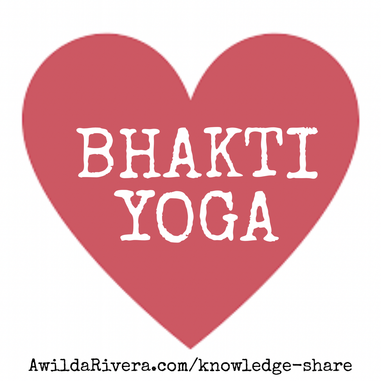 For the last 12 months, we have explored questions around the practice, purpose and benefits of Yoga Asana. We have taken time to explore some of the philosophical underpinnings of this historically rich tradition; and we have also discussed how to identify & begin a physical yoga practice that resonates with your soul. Yet, we have only begun to scatch the surface. All we have discussed relate primarily to the physical practice of Yoga Asana and all that comes with it. The question remains: Can Yoga exist off the Mat, with out Asana being involved? Yes! There are several types of Yoga that exist. As westerners we are most commonly acquainted with Hatha & Raja Yoga[1]. Hatha & Raja Yoga contain an essential element of physicality that is very attractive to busy people in the west who are looking to exercise their body in an intentional. It is through this intentional exercise that they hope to achieve balance, increased self-awareness, and ideally inner peace – also know as enlightenment. Bahkti Yoga exists devoid of required physicality. It is known as: The Yoga of Love, The Yoga of Devotion, The Yoga of Devotion To God. Ultimately, this is the Yoga of Surrender to the Divine. There is neither a Diety in particular to whom you must devote yourself, nor one idea; however, in order to surrender completely you must devote yourself to something greater than yourself. The devotion to something greater need not take a shape or personage, but it can be simply embracing the Divine Love and connection we all share OR the Beauty of Nature all around us in every living thing. In a modern western world, it is understandable that we modify the application of the ancient principles of Bahkti Yoga to fit our realistic needs. Therefore you many not feel called to sing Kirtan, chant mantras every morning, or set an altar with deities to whom you pray directly… and that’s OK! There are may ways you can tap into the spirit of Bahkti Yoga such as: volunteering, giving food to the homeless, dedicating the energy your physical Yoga practice to someone who is in need, interacting with all around you from a place of unconditional love & non-judgment, or immersing yourself in nature so that you can appreciate the beauty of the world around you. Bahkti Yoga is not a RELIGION. It is just another avenue available to those who are looking to connect with the Divine through a unity with the world around them. While I would certainly encourage you all to experience a Kirtan performance and research mantras, I understand that for some of you that will not resonate. The great news is that in this brave new world, we have the opportunity to take the powerful ideas of Bahkti Yoga: Love – Devotion – Connection with the Divine, and find ways in our everyday lives to organically engage in this fulfilling and empowering practice. How will you bring a little Bhakti Yoga into your life? Until next time…. Namaste!! [1] You may be unfamiliar with Raja Yoga, however it is the Original Form of classical Yoga from which 90% of yoga lineages found in west were derived. It is also known as the ‘8 limbed path’ of Yoga. Hatha Yoga is more commonly known as ‘Sun Moon’ Yoga as is focused on using the body as a vehicle to transform the conscious of an individual. CategoriesAll Infographic Personal Management Podcast Interviews Professional Development Success Coaching Time Ninja Series Under The Bodhi Tree Yoga by Awilda Rivera A deeper dive into one of the most fundamental Success Tips. These tips are shared regularly in the Success Suite - a 100% free closed facebook group lead by me. Interested in more tips and advice around how to use them? Join the Success Suite today! 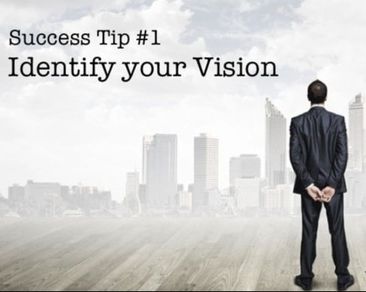 Whats does “Success” mean to you? Are you already successful? Are there things you still wish to achieve? More importantly, are you clear on your Vision of Success – not only long-term but in the immediate future? The thought of all the work associated with getting clear on your vision may scare you, it may even make you uncomfortable. However, having Clarity of Vision is essential to your success. Let me be clear. I don’t mean that your vision is static or etched in stone. Your Vision can be flexible, it will change and evolve over time. The clarity I am referring to relates to your definition, direction, desire & intent. Success is a big idea. It is very easy to confuse success with the practice of relentlessly striving for more. In order for you to strive for success you must define success for yourself. However, you must be willingly to bravely ask yourself the hard questions:
The answers you get to these questions will help to inform your definition of Success. Once you have an idea of what Success means to you, you can then start to clarify what the reality of Success would look like for you in the short & long term. It may be easier for you to envision the longterm Success – a reality comfortably divorced from your present because so much must be done before you can get there. While it is good to dream big, you must also ground yourself in what the reality of now. The Big Dream (long term vision) helps you get clear on your intention: Ex 1: I want to run a 7 figure business with international distribution and 5-7 employees by 2019. In the example above, the intent to is run a profitable business that reaches 7 figures by 2019, and concurrently expand the company to 5-7 employees in an effort to meet the potential growing needs of that business. The short term vision of Success is critically important. It helps you to begin to identify the little wins that are necessary to achieve your Big Dream. Understanding the Little Wins (short term vision) help you to find the direction that will lead you more easily to your BIG DREAM (long term vision) : Ex. 2: I want to become a trusted expert in my industry, building relationships with influences and brands that can grow my exposure. As I build credibility, I want to release content that support my expert status and draws more people to my brand who wish to engage with brand at a high level through product and services purchases. In example 2, The Little Wins (short term) direction would be to tackle projects that would increase exposure, build brand credibility and position you as an expert. Direction is critical because in order to be able to adjust you have to know where you were originally headed. One of the biggest challenges for Entrepreneurs and Professionals focused on growth is a lack of focused effort. When you are trying so many different approaches at once, it will be difficult for any one approach to gain any meaningful traction. Therefore having a long term vision is good, taking the time to develop your short term vision is essential. Each plays a necessary role in helping you to get clear on your intent & direction. The final factor in establishing a clear Vision is your Desire. You have taken the time to define success, assess what will be required to achieve it , now its time for you to decide if you are willing to commit to it. DESIRE is everything! With out the desire to do whatever it takes, overcome the inevitable obstacles that await, remain enthusiastic, be disciplined and follow through Success will continuously elude you. YOU HAVE TO WANT TO TAKE ACTION! If Desire is missing then the probability of success is significantly decreased, if not completely cancelled out. Think I am being dramatic? Consider this, when was the last time you succeeded at a task or project you had no desire to complete? You may have completed it because you had to for work or school, but was it a success? Did you do your best work? Was it a positive experience? I bet that the answer to at least 1 of these questions is NO. Ultimately, in order to set our selves up to experience Success in a way that satisfies your spirit one must:
Are ready to dive in & get clear? TAKE THE PLUNGE. You have everything to gain and only fear to lose. Feel like you need help with this? Contact me! CategoriesAll Infographic Personal Management Podcast Interviews Professional Development Success Coaching Time Ninja Series Under The Bodhi Tree Yoga by Awilda Rivera originally published in Aquarius Magazine in 2016 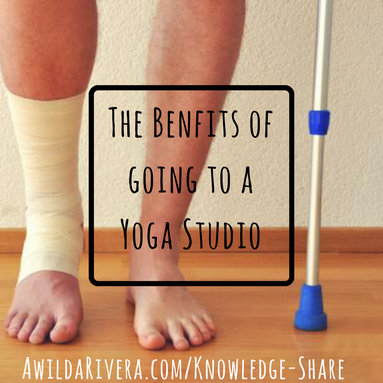 There are a million Yoga Magazines, Websites and Home resources these days. The availability of DIY Yoga has provided many with a low cost introduction to Yoga Asana & Philosophy. The prevalence of these resources has created a false sense of security for those who avoid Yoga Studios like the plague. Many ask: “Why pay for a class at a Yoga Studio when I can get a Yoga YouTube video for Free?” The truth is Yoga Asana can cause injury if not done properly. Over the last 10 years there has been considerable debate and discussion about the dangers of Yoga. Regardless of where you stand on the issue, one thing is undeniable: One can get hurt practicing Yoga incorrectly. Any activity where you are engaging in physical movement can cause injury. Although Yoga is low impact, the risk of injury is still present. Even the most basic Asana can injure you, if done improperly. Learning the safest way to move into & hold a Downward Dog is something that is difficult to learn from a video or magazine. One may look at a picture of a person in Downward Dog and think, “Oh that’s easy! All I have to do is put my self in a Upside Down ’V’ shape.” However, incorrectly holding Downward dog over time can cause serious rotator cuff, elbow, wrist and shoulder problems. I am not suggesting that one must execute the pose perfectly to avoid injury, but rather that an awareness of proper alignment is essesential to a safe & sustainable Yoga Asana practice. Many of you are thinking, “For $20 a class I’ll take my chances and move slowly through a FREE Yoga video.” I will admit initially I, too, let my opinion about how much Yoga Studio classes cost dictate how I felt about learning from a real person. I was completely opposed to paying any money to practice Yoga so I began to explore Youtube. Quickly, it became apparent that there was a wide variety of teachers & teaching styles available on the Web. Left to my own devices, I risked it all as I dove into various styles. Determined to get the most out of the free internet resources I chose the most seemingly reputable teacher and practiced with the video. Lacking the guidance of a trained teacher, I forced myself into shapes, attempting to watch the computer and mimic the instructor. I was attempting to run with out knowing how to walk. Not only was I failing to get the most out of the free videos, but I also wasn’t learning anything. Ultimately, I was left with a sore wrist, achy lower back & more questions than answers about the appropriate way to practice Yoga Asana. It was not until I attended my first studio classes that I became acquainted with the fundamental Yoga alignment principals through demonstration. It was invaluable to be able to watch a knowledgeable instructor perform the Asana and then have that instructor provide me with feedback about modifications that can help me achieve the posture more safely in my body. Additionally, the instructor’s reminders to “find your edge and pull back” were critical to the process of developing physical, muscular and sensory awareness in my body. “The most important reason a person should attend a studio class, is to learn what they should and should not be feeling in their body,” says Physical Therapist Kara Strauss. She adds, “having an experienced teacher look at your body & provide modifications can be the difference between a safe practice and getting hurt. The cost of rehabbing an injury is exponentially greater than the cost of attending a few yoga classes to learn the basics.” There is nothing wrong with saving a few bucks and cultivating an Asana home practice. One must simply take the time to learn the basics from a knowledgeable, certified, professional so you have a strong foundation. If you lack an understanding of the fundamentals of Yoga alignment principals, and venture into the world of DIY Yoga, what you are risking could be worth more than the money you save by avoiding the studio. Spend the money & practice safe. Your body is worth it. 10/19/2017 1 Comment Yoga Burn out is REALBy Awilda Rivera This piece was originally published in July 2016 in Aquarius Magazine  Yoga can be a mystical and enchanting love. For some Yoga is an experience of love at first sight, and yet others have to spend time cultivating their yoga love affair. What happens when you fall out of love? What happens when you no longer have the same zeal for the practice? When all of your favorite teachers bore you? When you no longer have the desire to practice on your own? Have you stopped loving Yoga? Many Yogi’s suffer from the idea that Yoga is a panacea. I agree that Yoga produces a multitude of physical, medical and energetic benefits. However when all you do is Yoga, all the time, you can get too much of a good thing. Yoga fatigue occurs when Yoga is your only physical practice, spiritual outlet and extra-curricular activity. Space is key. In every relationship there must be space – between partners, between the creator and their art, the athlete and their sport, the professional and their craft. If there is no space then the relationship is out of balance. When you take space form the activity, person, or behavior that you love then when you come back to it, you are able to approach it with a fresh perspective and renewed interest. For 48 months I did Yoga, and only Yoga. I learned Yoga Asana, I taught Yoga, I studied Yoga text, I had Yoga meetings, I got involved with Yoga organizations – my life was consumed by Yoga. About 5 months ago I started to lose some of my zeal for Yoga, I had too much of a good thing. I was of the strong opinion that if you practice Yoga regularly then you don’t need any other daily exercise. Yet, I couldn’t deny that I was just not having as much fun practicing Yoga anymore. I knew I needed to take action, but the only action that came to mind was to – take a break from Yoga. I sat with this deep, frightening truth. It was beyond my comprehension that I could already be burned out. After sitting with the reality that confronted me, I realized I needed to vary my daily physical activity; in short I needed to diversify my exercise. Once I accepted what I was feeling, the resolution presented itself rather quickly: It was time for me to start running. But, was I going to break up with Yoga? Running is wildly different from Yoga. I was attracted to the speed, quick satisfaction, jock culture and the challenge. Running was like a mistress I was cheating on Yoga with, all the time I spent running I thought about Yoga. As I ran I would sequence my ideal Yoga class to compliment the trauma a runner’s body experiences. The more I was drawn to running the more I was called back to the mat. The space I allowed myself brought me back to the mat. Allowing myself the space to be honest, take time away from yoga, and be open to other pursuits helped to reinvigorate my love of Yoga. I was able to look at the practice & its benefits through a new lens. Yoga was no longer my only choice, but rather a foundation from which I could create an expansive, safe, varied psychical practice with avenues for spiritual exploration and energetic release. Love Yoga, Love yourself, love your options. Remember you can have too much of a good thing. Until next month….. |
Knowledge Share:
|
Welcome! I am so glad you found this area of my site! It is my intention to share a tone of awesome free content with you all here. Feel free to comment, email or share posts that you enjoy! Thanks for visiting!**All blogs written by Awilda Rivera, unless otherwise indicated therein. |
Categories
All Infographic Personal Management Podcast Interviews Professional Development Success Coaching Time-ninja-series Under-the-bodhi-tree Yoga |
Archives
July 2019
|

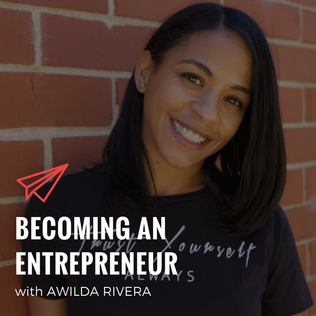

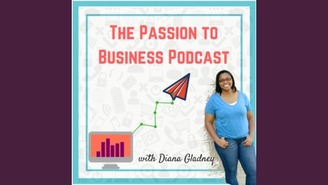
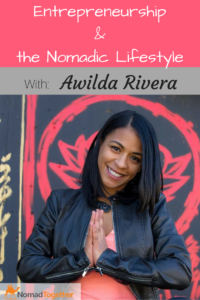


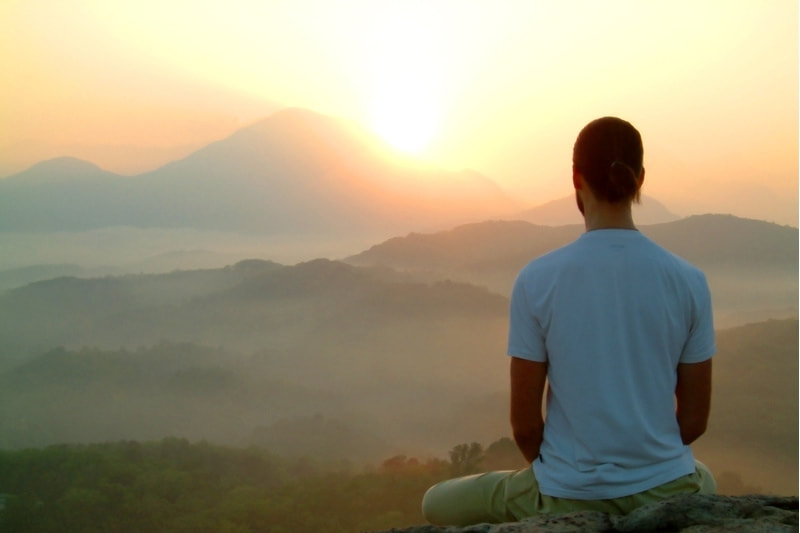
 RSS Feed
RSS Feed